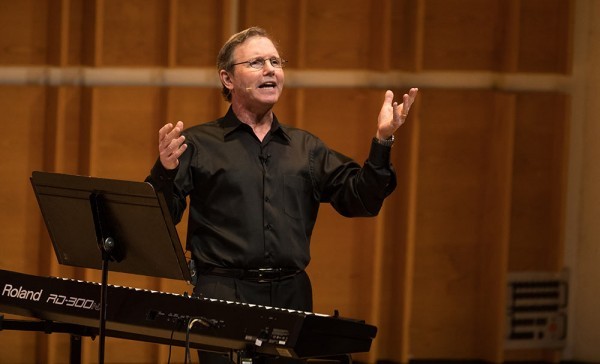LINCOLN CENTER
Alice Tully Hall
The Chamber Music Society of Lincoln Center
Windstorm
Lise De La Salle - Piano
Adam Walker - Flute
Stephen Taylor - Oboe
David Shifrin - Clarinet
Marc Goldberg - Bassoon
David Holley - Horn
Reicha - Quintet in E-flat major for Flute, Oboe, Clarinet, Bassoon, and Horn, Op. 88, No. 2 (1811-17)
Thuille - Sextet in B-flat major for Flute, Oboe, Clarinet, Bassoon, Horn, and Piano, Op. 6 (1891)
Copland - “New England Countryside” from The City, arranged for Flute, Oboe, Clarinet, Bassoon, and Horn (1939)
Mozart - Quintet in E-flat major for Oboe, Clarinet, Bassoon, Horn, and Piano, K. 452 (1784)
"The sonic array of a wind instrument chamber music concert is unsurpassable. Although we revel in the thunder of the modern piano and the warmth of the violin, the soundscape of combined flute, oboe, clarinet, bassoon, and horn—the classic wind quintet heard in this program—offers a rich tasting menu for the ear. Come hear CMS’s exceptional lineup of wind players tackle this demanding and rewarding repertoire."
Reicha - Quintet in E-flat major for Flute, Oboe, Clarinet, Bassoon, and Horn, Op. 88, No. 2 (1811-17)
Thuille - Sextet in B-flat major for Flute, Oboe, Clarinet, Bassoon, Horn, and Piano, Op. 6 (1891)
Copland - “New England Countryside” from The City, arranged for Flute, Oboe, Clarinet, Bassoon, and Horn (1939)
Mozart - Quintet in E-flat major for Oboe, Clarinet, Bassoon, Horn, and Piano, K. 452 (1784)
"The sonic array of a wind instrument chamber music concert is unsurpassable. Although we revel in the thunder of the modern piano and the warmth of the violin, the soundscape of combined flute, oboe, clarinet, bassoon, and horn—the classic wind quintet heard in this program—offers a rich tasting menu for the ear. Come hear CMS’s exceptional lineup of wind players tackle this demanding and rewarding repertoire."
"Even a momentary glance into the program biographies of Reicha and Thuille will reveal extraordinary relationships, experiences, and accomplishments that made both men, who lived a century apart, central figures in the musical landscapes of their eras. While Anton Reicha was a friend and colleague of Beethoven since their teenage years (they were both born in 1770), he managed to live a full musical life not in Beethoven’s shadow—an enormous credit to his creative energy. While Beethoven did compose 16 string quartets, Reicha composed 24 woodwind quintets, setting the standard for the genre for generations of composers to follow. And the looming presences of Wagner and Strauss did not stop Ludwig Thuille from composing his own six operas (one of which was performed by the Metropolitan Opera here in New York in 1911), as well as many songs, piano compositions, and orchestral works.
It is perhaps not as well known that Aaron Copland was a very successful composer for film (he shares this distinctive musical sideline activity with a host of famous figures such as Shostakovich, Prokofiev, and Korngold). For the evocative miniature of Copland’s we hear tonight, we have a contemporary composer, Erik Morales, to thank for constructing this expert arrangement, in the tradition of countless great composers going all the way back to Haydn.
Need we say anything about Mozart? Perhaps it’s best to quote him on his quintet, from a letter to his father of April 10, 1784: “It had the greatest applause...I myself consider it to be the best thing I have written in my life.”
It is perhaps not as well known that Aaron Copland was a very successful composer for film (he shares this distinctive musical sideline activity with a host of famous figures such as Shostakovich, Prokofiev, and Korngold). For the evocative miniature of Copland’s we hear tonight, we have a contemporary composer, Erik Morales, to thank for constructing this expert arrangement, in the tradition of countless great composers going all the way back to Haydn.
Need we say anything about Mozart? Perhaps it’s best to quote him on his quintet, from a letter to his father of April 10, 1784: “It had the greatest applause...I myself consider it to be the best thing I have written in my life.”


















































